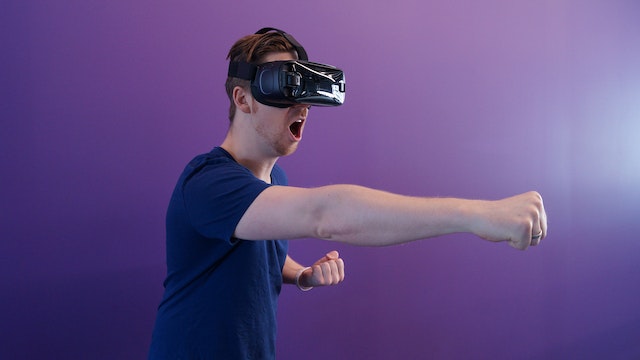Theme:
- Augmented reality (AR) and virtual reality (VR) have gained significant traction in various industries, including the defence sector. These technologies can help improve the overall defence system by providing new and innovative ways to train soldiers, conduct simulations, and plan strategic operations. Let us discuss the use of AR/VR in defence and its pros and cons.
Current use:
- Training: AR/VR technology is currently being used to train soldiers in a variety of scenarios, such as combat simulations and medical training. This allows soldiers to gain practical experience in a safe and controlled environment, without the risks associated with real-world training.
- Situational Awareness: AR/VR technology is also being used to improve situational awareness for soldiers. This includes applications such as heads-up displays (HUDs) and augmented reality (AR) goggles, which provide soldiers with real-time information about their surroundings and potential threats.
- Maintenance and Repair: AR/VR technology is being used to assist soldiers with maintenance and repair tasks. For example, AR goggles can display schematics and instructions for complex repairs, while VR simulations can be used to train soldiers on how to perform these repairs.
- Medical Treatment: AR/VR technology is being used to assist with medical treatment for soldiers. This includes applications such as virtual reality (VR) therapy for PTSD, as well as AR-assisted surgery and rehabilitation.
Future use:
- Unmanned Vehicles: AR/VR technology could also be used to control unmanned vehicles, such as drones or ground robots. This would allow soldiers to perform reconnaissance and other tasks without putting themselves in danger.
- Communication: AR/VR technology could be used to improve communication between soldiers and other military personnel. This could include applications such as real-time translation, as well as HUDs that provide soldiers with real-time information about their location and objectives.
- Intelligence Gathering: AR/VR technology could be used to assist with intelligence gathering, such as analyzing satellite imagery or interpreting intercepted communications. By using AR/VR technology to visualize this data, soldiers can quickly identify key features such as troop movements or potential targets, and make informed decisions based on this information.
- Urban Warfare: AR/VR technology has potential applications in urban warfare scenarios that require soldiers to operate in densely populated areas with a high degree of uncertainty and danger. AR/VR can also be used for mission planning and visualization, allowing military leaders to create virtual maps and models of terrain, buildings, and other objects to help plan and coordinate operations.
Pros:
- Enhanced training: AR/VR technology can provide more immersive and realistic training simulations for soldiers and other personnel, which can better prepare them for real-world scenarios.
- Improved decision-making: AR/VR technology can provide soldiers and other personnel with more detailed and accurate information in real time, which can improve their ability to make informed decisions.
- Reduced risk: AR/VR technology can be used to simulate dangerous or high-stress scenarios without putting personnel at risk, which can improve safety and reduce the likelihood of injury or death.
- Streamline work: AR/VR technology can streamline processes and workflows, such as maintenance and repair tasks, by providing visual aids and step-by-step instructions.
Cons:
- High Cost: AR/VR technology can be expensive to develop and implement, which can be a barrier to adoption for some defence organizations.
- Technical limitations: AR/VR technology is still in its early stages and can be limited by hardware, software, and network capabilities, which can impact the effectiveness and accuracy of training and simulation exercises.
- Security risks: AR/VR systems can be vulnerable to hacking, which could potentially compromise sensitive information or disrupt operations.
- Dependence on technology: Overreliance on AR/VR systems could lead to a decrease in the ability of soldiers and personnel to operate in real-world scenarios without the aid of technology.
Conclusion:
AR/VR technology has already proven to be useful in several defence applications around the world, including training, maintenance, and logistics. The use of AR/VR technology in defence can greatly benefit India by enhancing soldier training, improving situational awareness, aiding in equipment design and development, and strengthening national security. Continued investment in this technology can keep India at the forefront of military innovation.
Photo by Eugene Capon
Your Turn…
What’s your take on this topic? Express your point of view through the comment section below. And subscribe to our blog to read answers to the trending GD topics.
Topic suggested by Rahul Sharma. Copyright @ Group Discussion Ideas.

